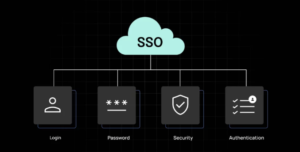
Channel management is the backbone of a successful sales and distribution strategy in today’s multi-platform digital world. Whether you’re running an e-commerce store, hotel, or software company, effectively managing your sales channels is critical to optimizing performance, maintaining brand consistency, and meeting customer expectations across every touchpoint.
In an increasingly competitive marketplace, businesses can’t afford to treat their channels as isolated silos. A smart and strategic approach to channel management ensures that inventory, pricing, messaging, and customer service stay consistent—whether you’re selling on Amazon, Shopify, your own website, or through third-party resellers. This article will guide you through what channel management entails, why it’s vital, and how to leverage it for long-term success.
1. What is Channel Management?
At its core, channel management refers to the process of overseeing the various channels a business uses to market, sell, and deliver its products or services. These channels can be both online and offline and include retail stores, e-commerce platforms, mobile apps, wholesalers, and third-party marketplaces. Effective channel management ensures that all sales avenues are harmonized, properly maintained, and strategically utilized to maximize revenue and efficiency.
With the rapid rise of digital commerce, businesses must now deal with complex networks of multiple channels that interact with customers in unique ways. A cohesive channel management strategy helps businesses monitor performance, align pricing structures, and ensure a unified brand experience, regardless of where or how a customer interacts with the brand.
Importance of Channel Management in Modern Business
Channel management is not just a luxury—it’s a necessity for businesses that want to stay competitive in today’s omnichannel landscape. By optimizing channel operations, businesses can increase their reach, improve customer satisfaction, and reduce operational costs. This is especially true for industries like hospitality, retail, and SaaS, where seamless channel integration directly affects customer perception and profitability.
Moreover, efficient channel management minimizes conflicts between channels, such as pricing discrepancies or inventory mismatches. It allows for better coordination between marketing, sales, and logistics teams, ensuring that customers receive a consistent and reliable experience across every platform. When executed well, it becomes a powerful engine for scalable growth.
3. Key Components of a Successful Channel Management Strategy
A successful channel management strategy involves several interconnected components. First, businesses need to select the right mix of channels that align with their target audience and product offerings. This means understanding customer preferences and behaviors on each platform and tailoring content, pricing, and promotions accordingly.
Second, integration and automation tools are crucial. Using a centralized channel management system can help synchronize inventory, manage pricing, track sales performance, and respond to customer inquiries across all channels from a single dashboard. This streamlining not only saves time but also reduces human error and improves overall accuracy in operations.
Tools and Technologies That Support Channel Management
Technology plays a vital role in modern channel management. Many businesses rely on channel management software to coordinate their sales efforts, monitor performance, and automate repetitive tasks. Popular tools like ChannelAdvisor, Linnworks, and Zoho Inventory offer robust features that support listing management, inventory tracking, order fulfillment, and performance analytics.
In addition to standalone tools, integrating channel management platforms with existing ERP or CRM systems creates a seamless data flow that enhances decision-making and customer insights. Real-time analytics and AI-powered suggestions help optimize pricing, manage demand fluctuations, and forecast future trends—essential features for a business looking to stay ahead of the curve.
Challenges in Channel Management and How to Overcome Them
One of the most common challenges in channel management is maintaining consistency across platforms. A product listed on multiple marketplaces may show different prices, descriptions, or availability if not managed properly. This inconsistency can lead to customer confusion, negative reviews, and lost sales. The solution lies in centralization and synchronization through reliable management software.
Another challenge is managing relationships with channel partners and avoiding channel conflict. This can arise when one channel undercuts another or if there’s no clear strategy for commission structures, territories, or sales roles. To overcome this, businesses must establish clear guidelines, contracts, and transparent communication with all stakeholders to ensure alignment and avoid internal competition.
Conclusion: Unlocking Business Potential with Strategic Channel Management
Channel management is more than just logistics—it’s a strategic approach that empowers businesses to thrive in a multi-channel world. By investing in the right tools, selecting the most effective platforms, and fostering harmony between internal teams and external partners, companies can create a frictionless customer journey that fuels long-term growth.
With the right channel management strategy, businesses can expand their market reach, improve brand consistency, and ultimately drive more revenue while staying agile in a constantly evolving digital landscape.
Frequently Asked Questions (FAQs)
1. What is channel management in simple terms?
Channel management is the process of managing how products or services are sold through different sales platforms like websites, marketplaces, or retail stores.
2. Why is channel management important for e-commerce?
It helps e-commerce businesses streamline operations, maintain consistent pricing, and reach customers across multiple platforms efficiently.
3. What industries benefit the most from channel management?
Retail, hospitality, e-commerce, SaaS, and manufacturing industries benefit greatly due to their multi-platform customer engagement.
4. How does channel management software work?
It connects different sales channels into one system, allowing centralized control of inventory, pricing, listings, and orders.
5. What causes channel conflict and how can it be avoided?
Conflicts arise when multiple channels compete for the same sale. It can be avoided with clear communication, pricing policies, and defined roles.
6. What’s the difference between a direct and indirect channel?
A direct channel sells directly to the consumer (e.g., a company website), while an indirect channel involves intermediaries like distributors or retailers.
7. Can small businesses benefit from channel management?
Absolutely. Even small businesses can expand their reach and manage operations more efficiently with the right strategy and tools.
8. How do I choose the right channels for my business?
Analyze your target audience, product type, and competitors to determine which platforms are most effective for reaching and converting customers.
9. Is channel management only for online businesses?
No. Offline businesses also use channel management to oversee distributors, resellers, and physical store operations.
10. What are some top tools for channel management?
Some popular tools include ChannelAdvisor, Sellbrite, Zoho Inventory, Linnworks, and Shopify’s Multi-Channel selling features.







